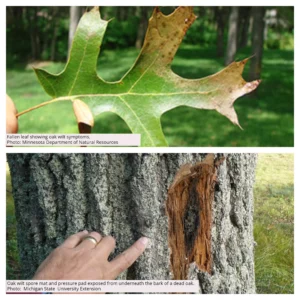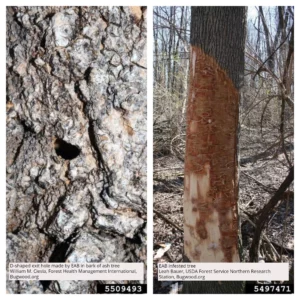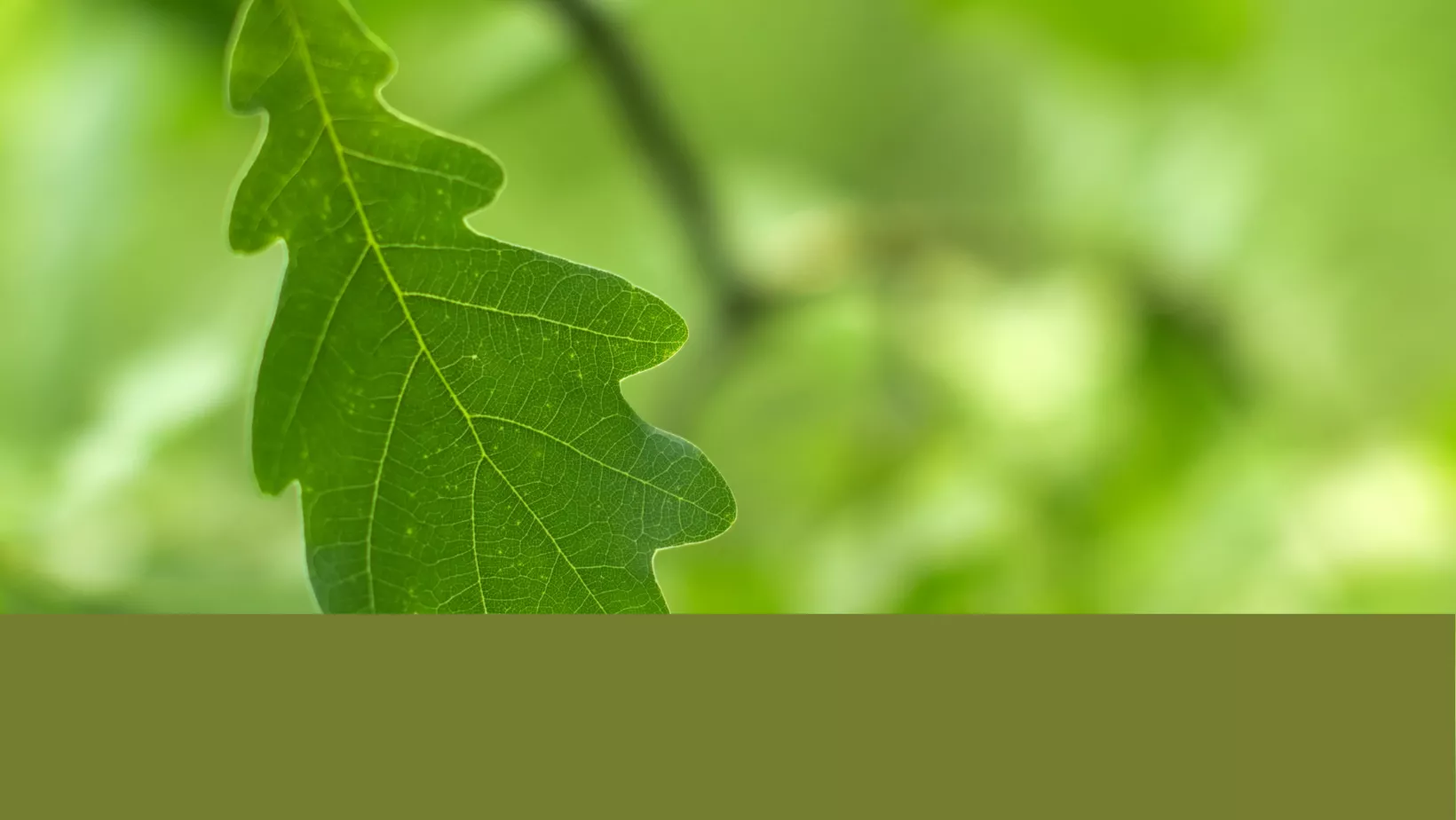If you own property with trees in northern Wisconsin, you may have an interest in the spread of oak wilt and the emerald ash borer throughout the state. Our environmental specialists can help identify and develop a plan to control invasive species on your property.
Oak Wilt
What is it? – Oak wilt is a fungal disease that is specific to oak and is very problematic primarily for red oak species. Once an oak tree is infected, it will most likely die within one year, or as quickly as two months. Signs that a tree is infected with oak wilt include leaf discoloration, leaves dropping, and black fungal mats protruding through cracks in the bark.
How is it spreading? – The disease can be spread by the fungal spores being introduced to a fresh wound on the tree or through root grafting (underground connections between neighboring trees). Root grafting can obviously only occur between trees in close proximity, but the fungal spores can be introduced to trees several miles away. This is commonly done by small picnic beetles that feed on tree sap. Fungal mats that form on infected trees produce an odor that attracts the beetles. When the beetles land on the mat, the fungal spores stick to them. These beetles then fly to a nearby tree to feed on sap produced from a fresh wound and leave the spores behind, infecting the new tree. Fungal spores can also be moved many miles on firewood cut from an infected tree.
How can it be prevented? – There are two primary methods to help keep the trees on your property healthy and oak wilt free. First, do not transport firewood that may have come from an area infected with oak wilt. Second, do not prune or wound trees between the months of April and August when the disease is most commonly spread. To be extra cautious, do not prune trees between mid‐March and October. If you must prune a tree, or a tree is unintentionally wounded, you should use a tree wound paint (usually found at your local hardware or landscaping store) to cover the wound.
What can be done if I find oak wilt? – First you will want to have a professional forester or tree care specialist confirm that you have oak wilt, as there are other tree problems that sometimes cause similar symptoms. If it is confirmed, fast action should be taken. The infected tree(s) should be taken down, and the wood should be utilized quickly. The wood can be kept for firewood, but it will need to be debarked, or it will need to be kept under a tarp for two years. You will then need to create a barrier around the tree(s) to prevent the disease from spreading underground through the roots. A professional forester can tell you where to put in the barrier based on tree size and landscape conditions. The barrier can be made mechanically or chemically. The mechanical method is the most successful, but the chemical method is less intrusive and often more cost effective. Trees of special meaning can also be given a tree injection with a fungicide to prevent them from getting oak wilt. This can only be done to a tree that may be infected, but is not yet showing symptoms. Once the tree’s leaves have changed color and started to drop, the infection has spread too far, and the injection will not be effective.

Emerald Ash Borer
What is it? – The emerald ash borer (EAB) is an invasive beetle that originates in Asia, but was introduced to the United States in the early 2000s. Since EAB was introduced, it has killed millions of ash trees across parts of the United States and Canada. The larvae of the beetle live under the bark of trees and feed on tree tissues. This disrupts the flow of water and nutrients through the tree and slowly kills the tree. Signs that an ash tree may have an EAB infestation include dieback in the canopy, bark splitting, significant woodpecker damage, and the presence of D‐shaped exit holes in the bark.
How is it spreading? – EAB spreads short distances (a few miles) every year by the adult beetle flying to new trees and laying their eggs. EAB is spread further distances by people moving infected wood from one area to another.
How can it be prevented? – The easiest way to slow the spread of EAB is to keep your firewood local or purchase it from certified firewood dealers. Quarantine areas have been set up across Wisconsin based on the counties in which EAB has been positively identified. Firewood is not allowed to be moved outside these quarantine counties. The counties in northern Wisconsin that are currently under quarantine for EAB are Oneida and Douglas. Nearly all counties in the southern portion of the state are already under quarantine.
What can I do if EAB is nearby? – For homeowners who have found EAB on their property or suspect it might be near, there are two management options to consider. The first option is to reduce the number of ash trees on the property and replace them with other tree species. The second method is to inject individual ash trees with a chemical insecticide. The insecticide kills any insect larvae that might be in the tree, and also helps prevent any new infestations. In order to decide which method to choose, homeowners will have to decide how much they value their ash tree(s) and how much money they want to spend. Removing trees may be the best option for less desirable trees, but the cost of removal can be either relatively low or quite high depending on the tree’s size and location. Tree injection can effectively protect a tree for up to two years, and is often used for trees that have higher value to the homeowner. However, trees showing advanced symptoms of an EAB infestation may not be good candidates for injection. Tree injections are best used early on, or prior to, an infestation. A professional forester or tree care specialist can help you choose the right treatment options for your property.








